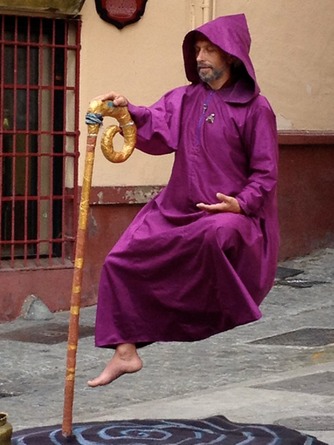Our three week tour of southern Spain starts in Granada, near the south-east coast. As we approach Granada from Cartagena on the bus, the country side changes from flat dry sandy plains to deep-green hills and valleys. We have seen continuous plantings of olive and orange groves, covering the land down to the roadside. Then the Sierra Nevada mountains come into view: the snow-covered peaks seem at odds with the dry and near-coastal conditions.
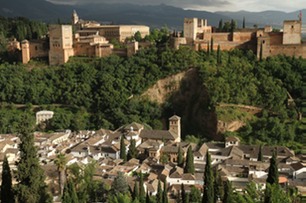
Granada has boulevarde-wide streets lined with brightly lit shops, and cobble-stoned alleys that wind like ribbons around white apartment buildings. The little alleyways are tempting, and our wandering leads us into the heart of the old Muslim area, the Albaizin. This gracious area contains the heart of Islamic architecture and design, and we begin to appreciate the hundreds of years of Islamic influence in Spain.
But the most exquisite and revealing window to this world comes from our visit to the Alhambra, a vast complex on the highest hill, once a series of fortresses and palaces. Its first appearance in history is in 900, and between the 1200s and the 1400s, Muslim leaders commissioned the building of the greater part of this large site.
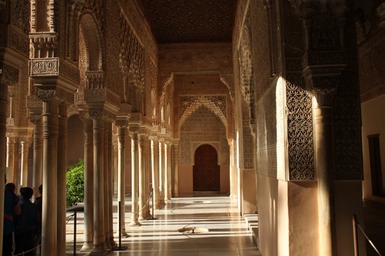
It is set in cypress groves, and orange trees decorate the walkways and courtyards, constantly filling the air with the sweet smell of oranges. The gardens are dense with flourishing flowering shrubs and trees, including rosebushes and weeping blossoms. As the early morning sun warms the courtyards, the scents combine into a natural incense that wafts around us like a soft lacy veil.
The Palacio Nazaries (1333-1354) is at the furthest end of the site. The walls and ceilings of the internal rooms are decorated in the finest carved stonework and marble, depicting ornate and detailed figures and designs, patterns and calligraphy. Colourful tiles and mosaics also decorate the walls with an Islamic pattern of lines, crosses, curves and stars that weaves around itself, creating a picture sometimes in relief, sometimes not. It's a pattern we learn to recognise throughout our journey.
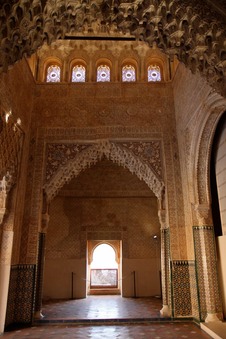
It seems impossible to photograph or describe the Alhambra in a way that tells of the depth of its beauty, the delicacy of the detail, the balance of structures that brings together expansive and minute, square and curved, soft and hard, water and light and shadows, private corners and public spaces, and the intricacy of the cobbled courtyards and paths. It is exquisite.
See our album for more photos
The next day we contrasted the understated delicacy of the Alhambra with the glaring gaudiness of the Basilica de San Juan de Dios. Granada's most famous saint, San Juan devoted himself to helping people in poverty and poor health, and was taken in by the Pisa family when he himself became unwell. He is buried in this Basilica, the altar of which rises at least three stories high, and is surrounded by gold columns, gold walls, gold carvings and statues, gold decorations, and of course gold framed boxes containing a range of heads and relics. We both wince at the lavish yet impressive display of wealth and grandeur, bestowed on someone whose values relentlessly pursued the exact opposite. The phot below gives you an idea of decoration. There are more photos in our album.
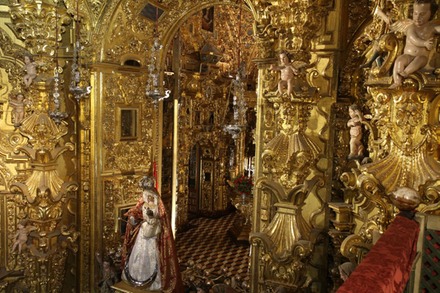
In Granada we begin to understand how you order tapas in stages and that it's a different concept of a meal, we hear flamenco music and in it the echoes of the Muslim call to prayer, we stretch single words of Spanish into sentences, we devour the best olives we've ever eaten, drink endless supplies of great red wine, and keep on being delighted by the wonderful quality of cheese, meats, breads and pastries. And then there's sherry. But that's a story yet to come.

